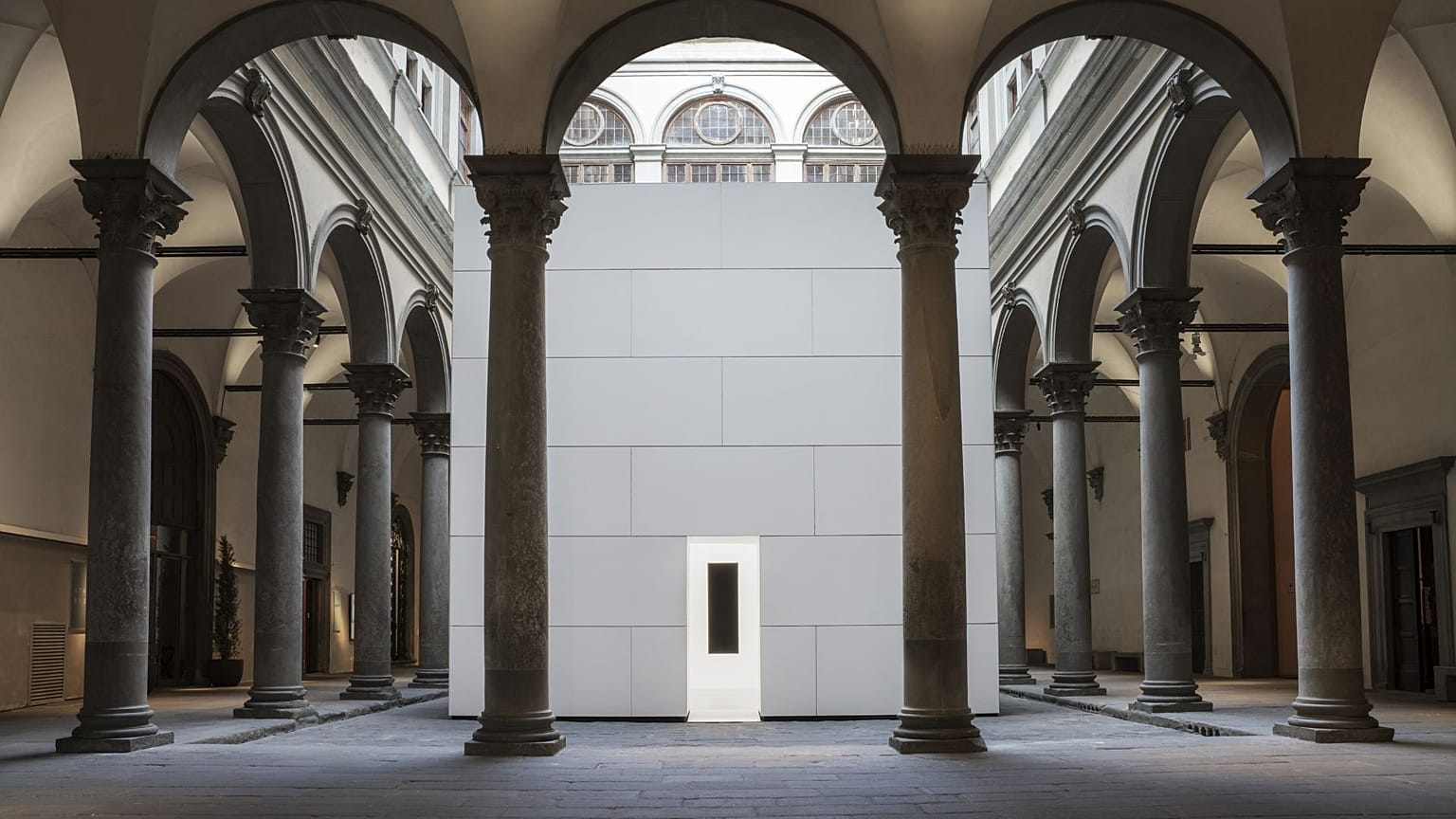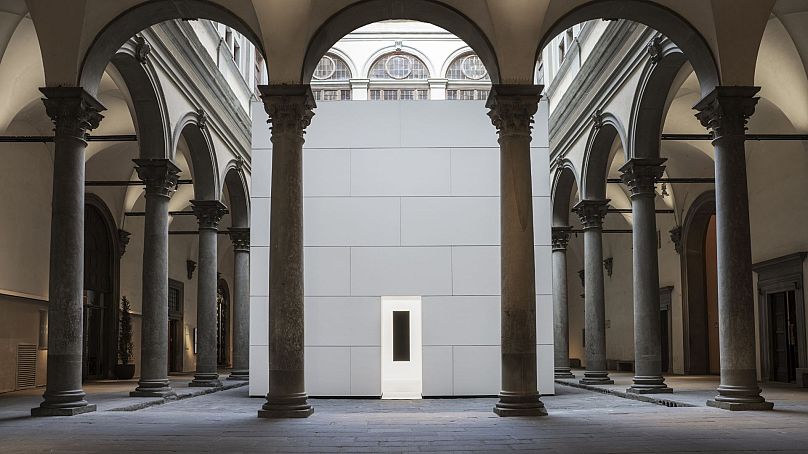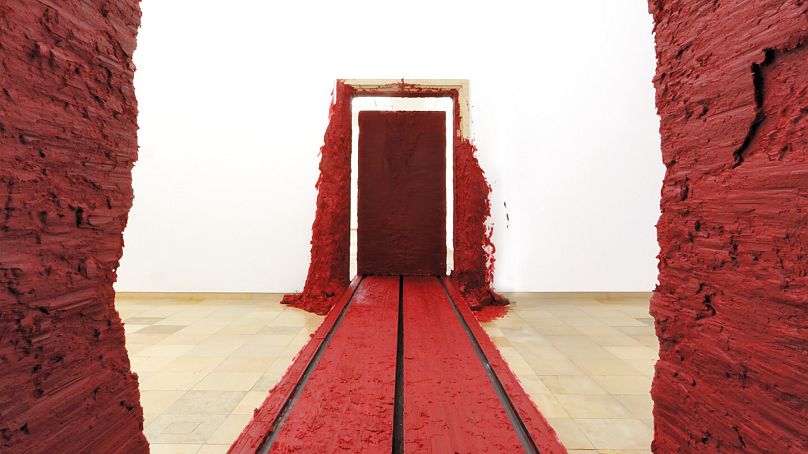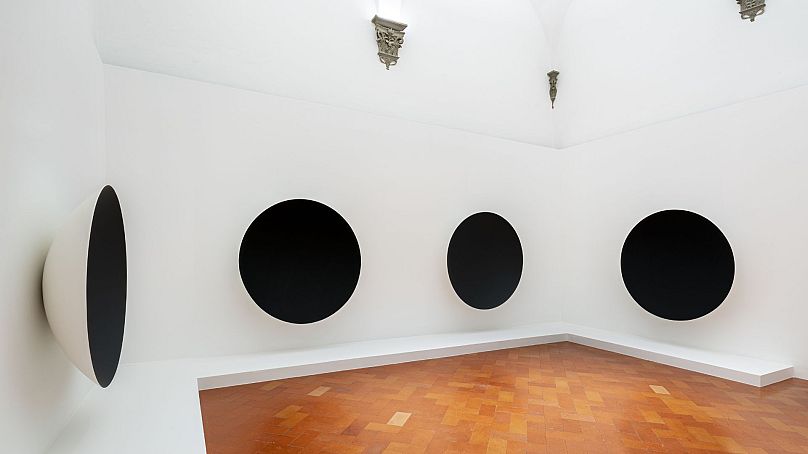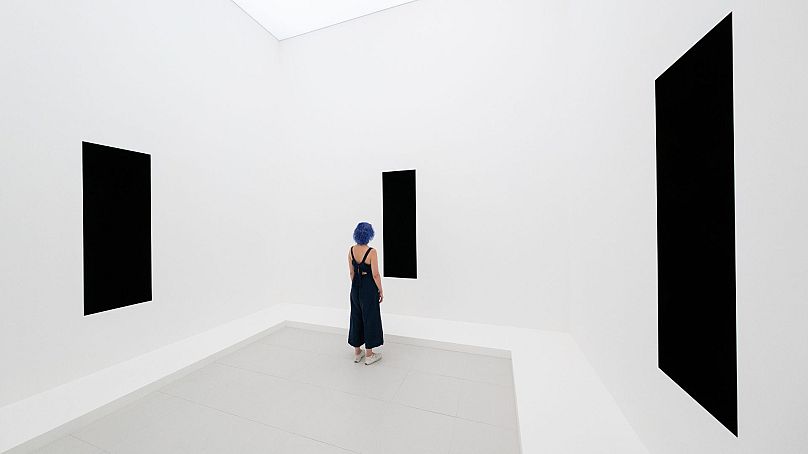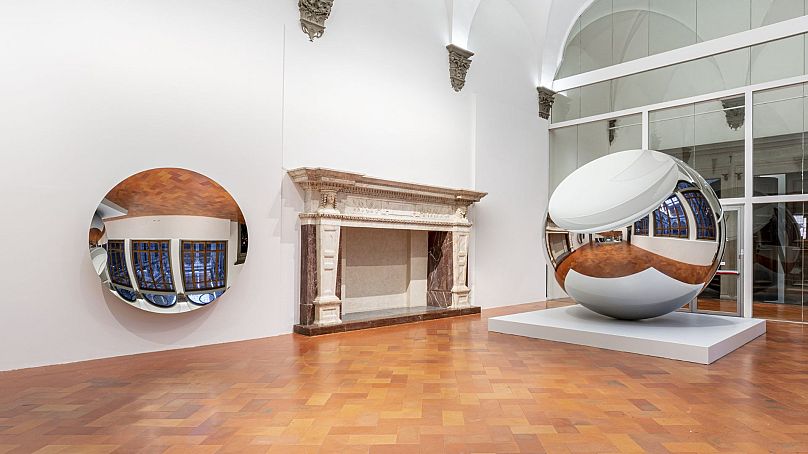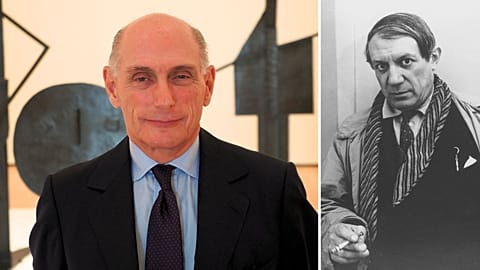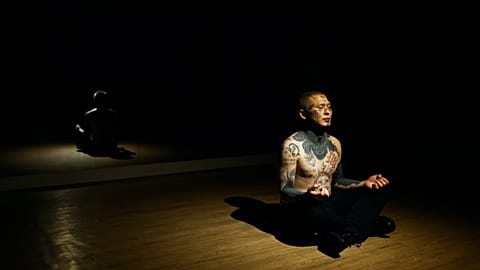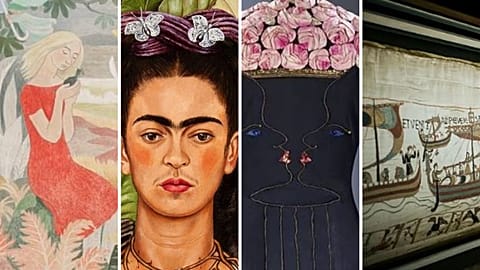Kapoor's trippy mirror sculptures, hotly-debated Vantablack artworks, and a giant cube-shaped pavilion invite visitors to question reality in a new blockbuster exhibition at the Palazzo Strozzi in Florence.
We've all seen the work of Anish Kapoor at some point or another.
Whether it's his humungous Cloud Gate "bean" sculpture in Chicago or his iconic ArcelorMittal Orbit in Stratford, London, the British-Indian Turner Prize-winning artist has left his creative footprint across the globe.
But it's a rare opportunity that you get to see the full range of his hugely influential work under one roof.
Well, a new major exhibition, currently gracing the historic Palazzo Strozzi in Florence, is showcasing a large collection of both new and existing works by the artist, tracing the entire arc of his career.
'Untrue Unreal', meticulously curated by Arturo Galansino, the director general of the Fondazione Palazzo Strozzi, invites spectators to delve into an invasive world where Kapoor's large-scale sculptures and installations blur the line between reality and illusion.
"It's all about contingent realities. Much of this show has so-called void objects, empty objects in it. But in fact, none of them are empty. They're all either full of darkness or full of mirror," Kapoor told Euronews Culture at the opening the exhibition.
Exploring Kapoor's diverse artistic output
Stepping into the stunning Palazzo Strozzi, located in the heart of Florence, visitors are immediately greeted by a grand-scale installation titled Void Pavillion VII, which was exclusively conceived for the magnificent Renaissance courtyard.
"In the courtyard, what I've done is build a white cubed building which I hope reflects the geometry of what is there, works with it, and you're required in a sense to walk into it. And within it, there are three objects, three non-objects, three half-objects that I hope engage. Confuse." Kapoor told Euronews Culture.
The installation is very impressive. It could represent both an ancient human-built shrine or an artefact from a future alien civilisation. And it's one of the many instances where Kapoor works with the Strozzi palace's existing space to enhance his creations.
The show unfolds across several gallery spaces, guiding visitors through Kapoor's multifaceted artistic output, from his disorientating mirrored sculptures to his visceral, blood-red installations.
Among the colossal works on display is the well-known Svayambhu (2007) - a massive block of ever-so slowly moving blood-red wax, traversing between two rooms of the Palazzo Strozzi and leaving a trail of messy wax remnants in its wake. It's brutal in its appearance but mesmerising to observe.
As you explore further, you'll find the delicate To Reflect an Intimate Part of the Red (1981), a seminal work by Kapoor characterised by vibrant yellow and red pigment forms, which sit gracefully on the floor. They appear remarkably otherworldly and fragile - as if they could shatter at the slightest breath of wind.
The "blackest material in the universe"
Several of Kapoor's hotly-debated Vantablack pieces, including Non-Object Black (2015) and Gathering Clouds (2014), can be found here.
The British-Indian artist made art history when he acquired exclusive rights to the pigment in 2016 - a deep black material that absorbs 99.96 per cent of the light that hits it.
But this wasn't without controversy.
An enduring feud with British artist Stuart Semple commenced, who mockingly brought out his own paint named the "Pinkest Pink", with the one condition that Kapoor himself was not allowed to use it.
However, in response, Kapoor managed to acquire the paint and posted an Instagram photo displaying a pink-dipped middle finger, with caption "Up yours #pink."
Addressing the controversies surrounding property rights in the art world, Kapoor emphasises the intricate and highly technical nature of the process involved in creating Vantablack works.
"This black material, the blackest material in the universe, isn't a paint. So it's not just a thing you paint on. It's a highly technical, complicated physical process. I've been working with it for nearly ten years now," explains Kapoor.
He adds: "It’s almost been necessary because of that complicated process to, for the company who does it, for me, for both of us, to engage in it in a very particular process. So if there's some idiot person who's out there trying to making a fuss about it, well, it isn't as he says it is and I couldn’t care less."
Controversy aside, the Vantablack artworks are undeniably a remarkable sight.
One particularly impressive piece, Non-Object Black (2015), exhibited within a glass cabinet, initially appears as an empty two-dimensional black canvas. However, upon closer examination from the side, a concealed three-dimensional sphere materialises in front of the canvas, obscured by the black material, almost like magic.
"If you put this black material on an object, the object disappears. So if what we're talking about is that all objects are three-dimensional, my contention is that in this way, they go beyond three-dimensions and in some sense become four-dimensional. They go into some other space," notes Kapoor.
Questioning reality
Elsewhere in the exhibition Kapoor presents his motion-sickness-inducing mirror sculptures, including Vertigo (2006) and Newborn (2019).
As you enter this space, your vision begins to distort, multiply, and twist. You find yourself engulfed within the artworks and the space they take up.
Beyond their deeper spiritual and philosophical underpinnings, these reflective sculptures unquestionably offer a visually spectacular experience, and are likely to attract influencers by the masses.
There's a lot to take in at this exhibition. There are pieces that'll likely blow your mind and others that might leave you feeling a little unsettled. But Kapoor manages to open the doors to the realm of the impossible.
And in a world where we're constantly bombarded with fake news and digitally manipulated images, Kapoor's art feels more relevant than ever.
In his own words: "Art has to live, if you like, in this intermediary, liminal half-space between meaning and no meaning, just as we do. And it's only then that it can truly have a long, deep life."
Check out the video above for more about the exhibition, and stay tuned to Euronews Culture for our full interview with Anish Kapoor.















